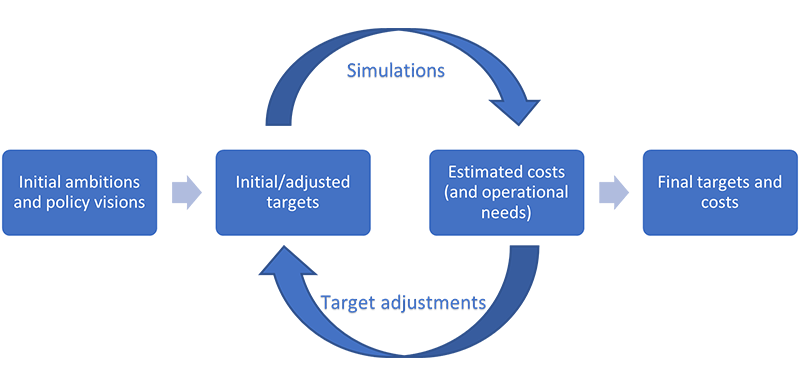Tool 3.3: Tips, Checklist and Examples
ECE Simulation Models
Tips
Communicating key aspects of the ECE subsector and envisioned policy priorities and strategies with costers/planners
The ECE TWG might not directly take part in the development of the simulation model. However, it is important that ECE stakeholders may communicate key information to those in charge of these costing simulations, to make sure they appropriately reflect the current situation and the ECE policies envisaged. Below are tips on which information is important to share with the costers/planners.
Communicate the Current Situation Main Goals
Communicate the Policies Envisaged
Checklist for ECE TWG Stakeholders Communicating with Costers and Planners
Use this checklist as a complementary tool to the tips which provide more information or download the paper-based checklist (page 2) here for offline use.
If you wish to use the online format of the tools, you may create an account to save your progress and return to the tool at a later time. You can create an account by clicking on the login icon at the top of the page.
ECE Simulation Model Examples
Two simulation model examples are provided.
For each simulation model example, please take a look at the “Online tool” (Sao Tome and Principe and Lesotho) as well as a short video showing how to navigate through the simulation model that you can download (Sao Tome and Principe and Lesotho).
Introduction to the Sao Tome and Principe model (Need-based projection model)
Introduction to the Lesotho simulation tool (Intervention-based projection model)
Recommendations and Reflection Tips
Adjustments to ESP ECE Components Post-Simulation

The use of the simulation model (and costed Action Plans) to set and adjust targets is an iterative process.
The inputs of this process are the initial ambitions and visions of the plan, in terms of:
- overall objectives (e.g. ECE Net Enrolment Rate),
- learning conditions (e.g. in terms student-teacher ratio, student-classroom ratio, or availability of learning materials),
- management (e.g. teacher salaries), etc.
The outputs of the process are the final targets and resulting costs.
Recommendations and tips when using the simulation model and setting and adjusting the targets
Remember that while the simulation model is a technical tool, target setting and their final adjustments are political decisions. Therefore, the simulation models and the scenarios should be used as communication tools with senior management to convey the necessary trade-offs and facilitate their decision-making.